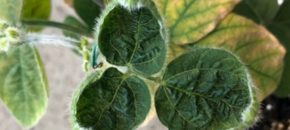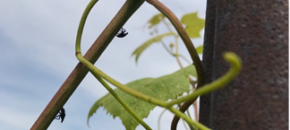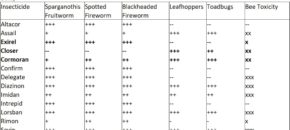Good weed control in transplanted and seeded cole crops requires planning and the use of pretransplant or preemergence herbicide applications. Preplant incorporate Treflan HFP at 1 to 1.5 pt/A for seeded and up to 2 pt/A for transplanted, or apply Dacthal 6F at 6 to 14 pt/A or Prefar 4E at 4 to 9 qt/A […]
Continue reading...Signage for Farm Worker COVID-19 Education Available
NJ Secretary of Agriculture Douglas Fisher has requested the following message be shared with the farm community. To assist farm operators in the provision of COVID-19 education, the NJ Department of Health has created a set of prevention messages that can be used as signage to be hung in common areas on farms.
Continue reading...Specialty Crops Injury Caused by Dicamba Herbicide Drift

By Maggie Wasacz1 and Thierry Besancon2 1 Rutgers Weed Science Graduate Student; 2 Rutgers Weed Science Extension Specialist for Specialty Crops Glyphosate-tolerant soybeans were first commercialized in 1996 in the United States. By 2006, almost 9 out of every 10 soybean acres were planted with glyphosate-tolerant cultivars. However, reliance on glyphosate alone for soybean weed […]
Continue reading...On-Farm Direct Marketing Webinar Series Now Online
The four-part On-Farm Direct Marketing webinar series recordings are now available online and linked below. Social Distancing and Safe Food Handling Guidance for Farm Markets, Wes Kline Sales and Distribution Strategies, Bill Bamka and Steve Komar U-Pick Guidance for Compliance with Executive Orders, Meredith Melendez Farmer Panel Discussion, Featuring Tracy Duffield, Jessica Neiderer, and David […]
Continue reading...Help, Spotted Lanternfly Nymphs are in my Vineyard!

Management of Spotted Lanternfly Nymphs in New Jersey Vineyards Megan Muehlbauer and Anne L. Nielsen Vineyards in Salem and Hunterdon Counties in New Jersey are beginning to report spotted lanternfly (SLF) nymph sightings (Figure 1). These small black nymphs have white dots on their abdomens and will hop if disturbed. Although it is concerning to […]
Continue reading...Efficacy of Old and New Insecticides on Cranberry Insect Pests

Four insecticides have recently been registered in cranberries. There are: Cormoran. This insecticide from ADAMA is a mix of Rimon (novaluron) and Assail (acetamiprid). The cranberry use rate is 9-12 fl oz/acre and the label lists several insect pests including leafhoppers, blackheaded fireworm, cranberry blossomworm, Sparganothis fruitworm, and spotted fireworm. This insecticide has provided good […]
Continue reading...